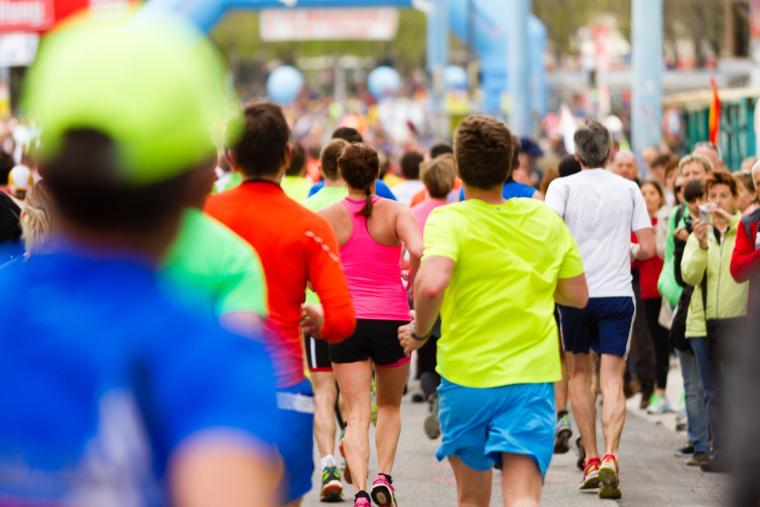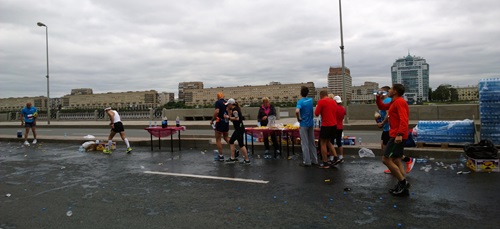
Major marathons are returning to pre-pandemic participation levels (or higher) and generating more economic impact than ever.
Consider the Bank of America Chicago Marathon. According to a new report, the 2022 event contributed a record-high $386 million to the Windy City’s economy. That’s a 25% increase from 2021, according to an independent economic impact study conducted by the University of Illinois at Urbana-Champaign’s Regional Economics Application Lab.
Since 2018, the marathon’s economic impact has exceeded $300 million every year the event has taken place in-person, and the 2022 event — which attracted nearly 43,000 participants, a full one-third of which were international visitors — was the first year the marathon’s impact exceeded pre-pandemic levels.
The study also showed that the 2022 marathon directly contributed more than $163 million to the main sectors of the local tourism industry, equating to 2,848 jobs and $136.6 million worth of wages and salary income. The average visitor spent $664 per day on accommodations, shopping, food, transportation and entertainment.
That’s downright astonishing news, considering news outlets like RunnersWorld.com only a year ago were citing shifting priorities, lingering COVID concerns and inflation as primary reasons road racing was failing to rebound. Indeed, overall participation last year was down about 16%
Now, in the waning weeks of 2023, the story is much different. Here are three more examples.
• In Michigan, this year’s Detroit Free Press Marathon presented by MSU Federal Credit Union counted nearly 24,000 participants in a weekend packed with races and challenges; it also marked a return to pre-pandemic participation levels.
• Overseas, the BMW Berlin Marathon in Germany included a record-breaking 47,912 participants from 156 nations, while the London Marathon added about 8,000 new participants between 2022 and 2023 for a record-setting 48,000-plus.
• And in New York, the TCS New York City Marathon became the world’s largest marathon this year when 51,402 total participants crossed the finish line. More than 51,900 racers began the marathon, representing 148 countries and all 50 states (plus Washington, D.C., Puerto Rico and Guam).
 “Races are selling out, and the demand is certainly out there among the general pack of runners,” Michelle Taylor, global head of sports sponsorships for TCS (an information technology services company), recently told Front Office Sports. “We certainly hope this is a lasting trend of people wanting to be healthier and looking toward running as a way to do that.”
“Races are selling out, and the demand is certainly out there among the general pack of runners,” Michelle Taylor, global head of sports sponsorships for TCS (an information technology services company), recently told Front Office Sports. “We certainly hope this is a lasting trend of people wanting to be healthier and looking toward running as a way to do that.”
“Much of the increased interest is because of the recent running boom coming out of the pandemic,” Rob Simmelkjaer, chief executive officer of NYRR (the nonprofit that oversees the New York City Marathon and other running events), told FastCompany.com. “So many people found running during the pandemic and have stayed with it to better their mental and physical health.”
As news outlet Hellgatenyc.com reported:
According to an NYRR spokesperson, 95 percent of races have sold out this year, up from 89 percent in 2019, the last “normal” year before the pandemic. (Only one NYRR race didn’t sell out this year, April’s SHAPE Half Marathon, which is limited to women runners.) Even races that in the past tended to have open spots on the day of are full — this year, the organization’s Mini 10K ran out of bibs, a first in the race’s half-century history.
While that might not seem like a huge jump, NYRR’s races are also selling out far more quickly now than they used to. NYRR says that its average race sold out in 87 days in 2023, a record. A March 5K in Washington Heights sold out in January, far earlier than normal, and the trend continued all year.
One reason for increased participation could be event organizers’ increased commitment to diversity, equity and inclusion. This year, prizes and awards at the non-elite level for all Philadelphia Marathon Weekend races, for example, were equally distributed across male, female and nonbinary categories of competition. Other major marathons have created nonbinary divisions in recent years, too.
Organizers see the move as a major step toward attracting and retaining new participants.
“These changes are critical to build upon and improve the Philadelphia Marathon Weekend experience,” David Wilson, the City of Philadelphia’s deputy managing director for general services, arts, and events, said at the time of the announcement. “Runners are coming from all over the world, so we see these changes as necessary to continue to attract participants and to continue the growth of this historic race weekend.”
The marathon participation boom seems poised to continue into 2024 — especially if recent reports from Boston Marathon officials are any indication: Qualifier registration for next year’s event (scheduled for April 15 with Bank of America as its new presenting partner) closed this fall with 33,000 applications. That’s the most ever received in Boston Marathon history, surpassing the previous record of 30,458 qualifier entries for the 2019 event.

